Bridging Victoria: Stories from the Archaeological Past
by Suzanne KroegerCreated in conjunction with the pop-up exhibit Bridging Victoria: Stories from the Archaeological Past this playlist showcases three never-before-exhibited local archaeology collections. Learn about bottles and ceramics from Chinatown, woodworking from the old Songhees Village (Esquimalt), and military objects from the depths of Esquimalt harbour.

1In 1 playlists
Before it was Shutters Spa development, this site was the Old Songhees Village, established in 1844 when the Songhees people were asked to relocate from the Inner Harbour. When construction began the discovery of a bone awl thought to date pre-1846, the limit of protection granted to BC archaeology, allowed the excavation of over 5,000 artifacts.
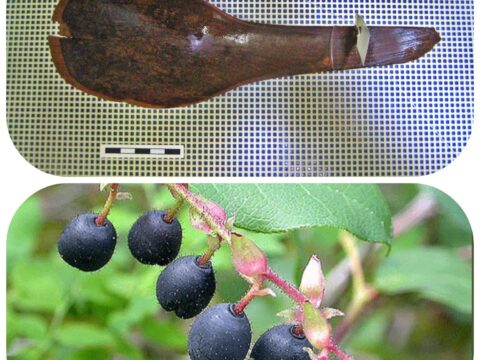
1In 1 playlists
Lacking the decorative carvings displayed by other spoons in the First People’s Gallery, this Coast Salish cedar spoon would have been used daily at mealtime. Sharing is highly valued to the Songhees; they would often share food with neighbors. This spoon could have been used to eat dried cakes made from Salal berries that were mixed with oil.
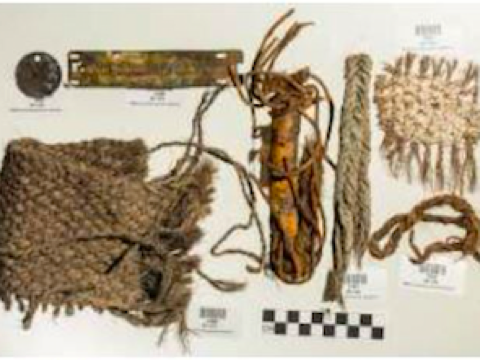
1In 1 playlists
The practice of twisting fiber strands together to make cordage is, arguably, one of the most ancient of technologies. Before machines, human hands turned cordage into items ranging from simple bow strings to elaborate fishing nets. For people living on B.C. coasts, who depended on the ocean for food, cordage would have been essential for survival.

1In 1 playlists
The Songhees village site was occupied between 1844 and 1911. In accordance with B.C. law, artifacts are only protected if they date pre-1846. An archaeological assessment of the site was prompted when a single artifact older than 1846 was uncovered. This site is unique because most of its contents date post-1846!

1In 1 playlists
The Songhees Village Soundscape takes you through the grass to a carving tent. There you can hear the carvers working and children playing in the distance. From the carving tent follow us out to the beach, listen to the seagulls and eagles as you walk along the smooth stones down to the water's edge.

1In 1 playlists
Excavated at Old Songhees Reserve, this hook is a reminder of the daily cultural practices of local first peoples. It does not show wear, however, halibut caught with hooks of the same design were routinely used. The attached carving indicates a Spirit Helper, which aided fishermen in their catch.

1In 1 playlists
Downtown Victoria’s blue bridge was built in 1924 and since its construction has been the main access between downtown Victoria and Esquimalt. When the site was excavated in 2016, the artifacts uncovered suggest an area of cultural overlap between the First Nations, European, and Chinese populations and evidence of significant international trade.

1In 1 playlists
The Chinatown Soundscape takes you through the day of someone living in Victoria's Chinatown (Canada's Oldest) at the turn of the 20th century. Come along and have some tea, follow us down the stairs out onto the wooden walkways, and enjoy the sounds of people visiting and children playing as you wander down the street.
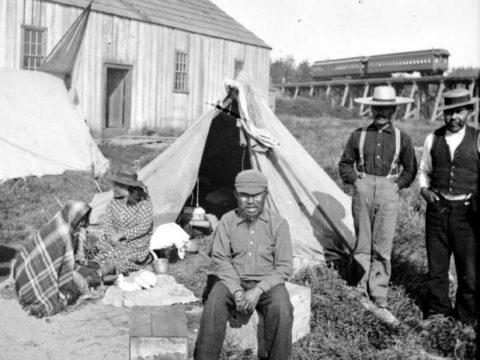
1In 1 playlists
Victoria has always been a melting pot of cultures! After Victoria was established, many First Nations came from up and down the coast to work and trade. Luckily for archaeologists and historians, their presence can be seen in the archaeological record. Unearthed northern basketry indicates First Nations from up north had once lived in Victoria.

1In 1 playlists
The bottles found at the Johnson Street Bridge site that related to medicine would have come from the surrounding hotels and bars. Like the Maltine bottle in the photograph. This bottle which contains nothing more than malt-barley, alcohol, wheat and oats (non-medicinal) was advertised to cure constipation, laziness, lung issues, and nerve problems
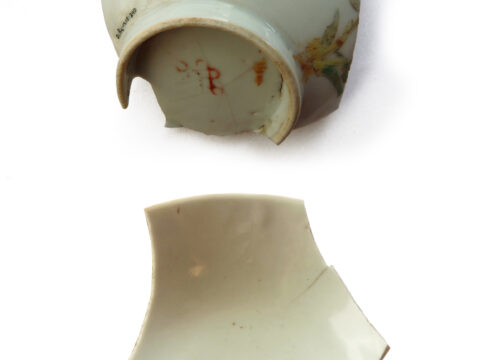
1In 1 playlists
Likely born in a kiln in Jingdezhen city, China, this bowl followed the Chinese diaspora across the Pacific. Found seven meters underground just off Wharf Street, near Canada’s oldest Chinatown. The design represents the four seasons with flowers and a peach in a cradle of leaves at the center. The mark on the bottom signifies an endless knot.
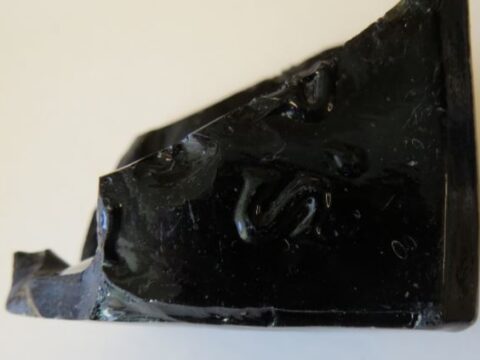
1In 1 playlists
Dr. Hostetter’s Stomach Bitter’s was put into large scale production in 1853 by David Hostetter, the son of the recipe’s creator, and continued produced for over 100 years. This 94-proof alcohol was marketed to the Union soldiers during the American Civil War as “a positive protective against the fatal maladies of the Southern swamps”.
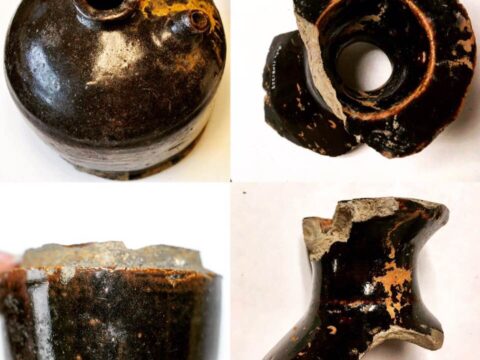
1In 1 playlists
Although unimposing in appearance this Brown Glazed Stoneware has an interesting story. Born in the kilns of Guangdong Provence, China, it journeyed 10,289 km to Victoria. Its contents were consumed by the Chinese workers and reused for storing homemade Chinese liquor. These jars reflect both the daily life of Chinatown and its seedier underbelly.
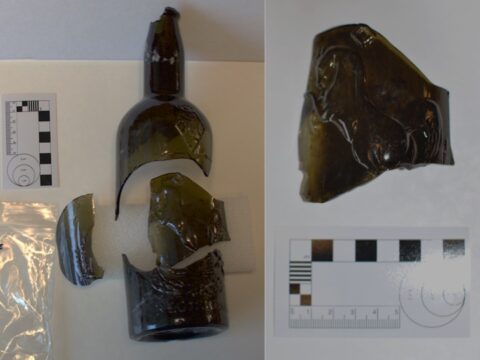
1In 1 playlists
This 1800’s Tooth & Co Australian beer bottle was found in downtown Victoria, buried 6 meters under Store St on the edge of the old harbour. The bottle comes from a storied brewery in the heart of Sydney, Australia found 12,427 km away. Check out the map to follow the story of the people and places behind the bottle! https://goo.gl/XSWj6W
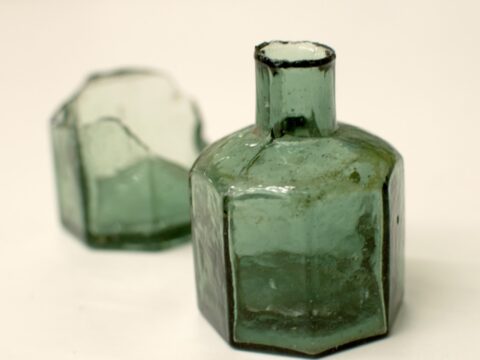
1In 1 playlists
While this may make the inkwell seem like an ordinary object, when put in historical and cultural context through written records, this inkwell as part of a larger story. This inkwell was a tool for Chinese Canadians to maintain communication with their homelands, retain cultural connection and defend their rights as members of Canadian society.

1In 1 playlists
Before Esquimalt Harbour was a naval port, it was a food resource for the ancestors of the Songhees and Esquimalt Nation peoples. The bay was used by First Nations for its marine life, but settlers were interested in the potential of the deep sea harbour. During the dredging to remove industrial contamination, artifacts were found from both groups.
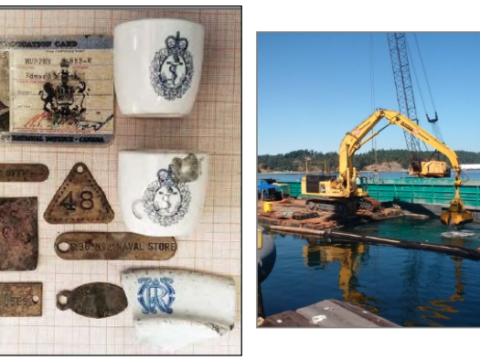
1In 1 playlists
Beginning in 2016, the Department of National Defence initiated a plan to remove 150 years of contaminated sediment on the ocean floor of the Esquimalt harbor. This ongoing dredging project has unveiled hundreds of artifacts, including 19th and early 20th-century naval paraphernalia, amazingly preserved indigenous fishing gear, basketry, and more.
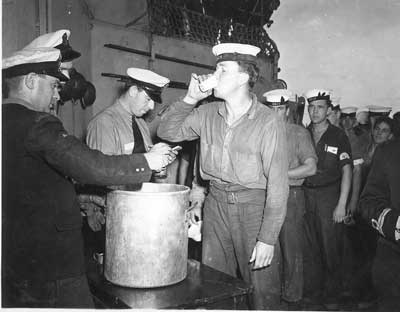
1In 1 playlists
60% of glass artifacts were alcoholic. The issue of daily spirits was one of the customs the RCN took from the British Royal Navy and it had changed over time. Junior sailors had to mix their rum with cola. Some will switch it for coke and pour the rum into a bottle for later. Later on, the serving of spirits at sea was replaced by beer and wine.
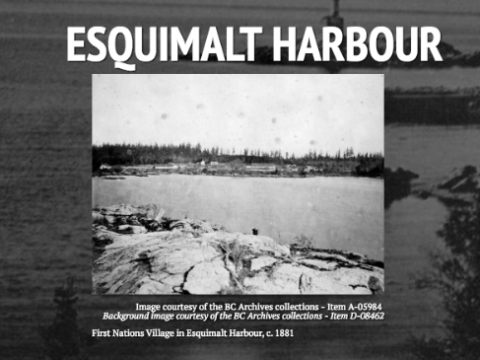
1In 1 playlists
This picture-based timeline gives a brief history of the Esquimalt Harbour and its use over time. Swipe your way through time and follow the links to learn more about local history!

1In 1 playlists
This audio-guide is based on the true life-story of David Michael Corry Connor – voiced by Samuel DeCosse – who was born in Liverpool in 1927 and served in the British Navy during World War Two. The creator, Devon Bidal, used a material culture approach to build the story around a lighter found at the Esquimalt Harbour site.

1In 1 playlists
The Esquimalt Harbour Soundscape takes you on a trip through time. Climb aboard the canoe and listen to the sounds of fishing as the ravens call from the trees. Then follow with us through the ages as canoes are replaced by tall-ships and tall-ships replaced by steam and then diesel.
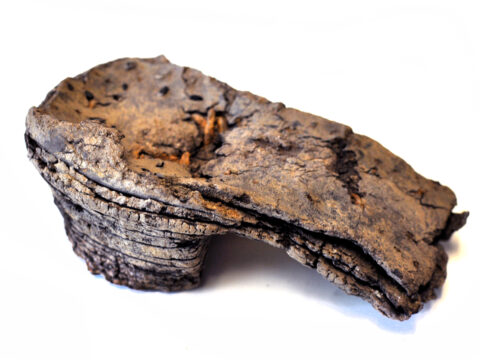
1In 1 playlists
We all know that shoes can show whether the wearer is rich or poor, but it turns out that they can also tell you whether the person is agreeable, emotionally stable, or liberal. Agreeable people tend to wear practical shoes, people with attachment anxiety typically wear well-kept shoes, and liberal people tend to wear shabbier, inexpensive shoes.
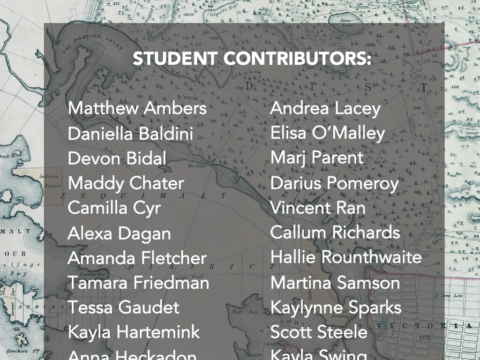
2In 2 playlists
